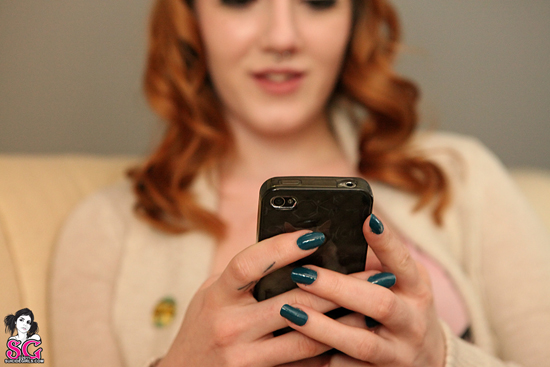
by Yashar Ali

Three weeks ago, Christopher Chaney, a thirty-five year old man from Florida, was arrested by the FBI and charged with 26 counts of identity theft, unauthorized access to a protected computer, and wire-tapping. For days, Mr. Chaney’s case was splashed across the media because the victims of his illegal acts were famous women like actresses Scarlett Johannson and Mila Kunis. Mr. Chaney readily confessed to his crime and said that he had become addicted to hacking the email accounts of celebrities.
About a month earlier, Ms. Johannson had been working closely with the FBI to find the perpetrator and block the dissemination of nude and provocative photos that Christopher Chaney hacked from her cell phone/email account. These photos were personal in nature, taken in privacy, saved on her cell phone, and intended for her then-husband.
In the last few years, with the advent of social media and cellphone cameras, we have become all too familiar with the concept of hacked, leaked photos of public figures in provocative poses or in the nude. However, with the exception of the rare article, mainly in men’s magazines, we don’t often discuss how the taking of nude pictures plays out with people in everyday life. Instead, we focus on the politicians and entertainers who do it; obviously, their notoriety makes the photos much more interesting.
But it’s not just celebrities who are engaged in taking and sending sexy/nude pictures over phone and email. We, as society, are doing it. A recent survey conducted by the University of Rhode Island shows that 56 percent of college students report having received sexually explicit images via text message. That’s a sizable number.
I am talking about the idea of “sexting,” which is defined as sending explicit messages via text message and also sending nude photos through the same technology. For purposes of this column, I am specifically writing about the widespread phenomena of sharing nude pictures via text message and email.
When I asked my friend Michelle, who is 31, about whether she has ever been asked to send provocative images by her boyfriend, she replied in the affirmative: “Most of the men I’ve dated or hung out with have asked me to text them a sexy pic. And there’s no way I would do it, I wouldn’t even do for the man I marry, I don’t know where those pics are gonna end up.”
But that’s not the end of it. These men don’t just respectfully give up on the asking. As soon as Michelle would say “no,” these men would start a campaign to convince her that they deserved or needed a provocative or nude photo.
“It was kind of pathetic, they would do something nice and claim they deserved a reward (a nude picture), or they would beg repeatedly multiple times a day, hoping I would just give up.”
Of course, these men had more courage because they texted her requests for nude pictures, rather than asking her for these pictures or any other sexual act, in person.
Most of us, men and women, remember the saying, “just the tip.” Google it. And most teen-aged girls, or hell, even adult women, have heard phrases like, “Come on baby, let me just put the tip in.”
Like those requests for “just the tip,” where asking for one thing eventually leads to the full-blown act of sex, is the act of sexting images, the new or electronic version of “just the tip?” And by the modern version of “just the tip,” I mean a process where men end up getting what they want by repeatedly begging, pressuring, and starting out small, i.e. “just the tip” or in this case, “just a quick pic.” The first picture, like “just the tip,” is merely a gateway to the whole damn thing.
While the electronic idea of “just the tip” is something women of all ages deal with, I believe, ultimately, that we should focus on how this patterning of sexting is related to the sexualization and exploitation of under-age girls — even if it’s done by underage guys. In a study conducted by Hearst Digital Media, 22 percent of teen girls (keep in mind this is girls who are willing to admit to it) say that they’ve sent sexually explicit photos to another person.
Zoe, the 20 year-old daughter of a friend, experienced the modern day version of “just the tip” with a guy she started dating when she was 18 years old (he was 22). A month after dating, her boyfriend requested a nude picture of Zoe. When she demurred, he started to beg “Come on, it would make me so happy. I want you so bad.”
The requests went on and on and on and on, so she finally sent him a provocative, but clothed photo, and he was satisfied…for an hour.
And then he said, “That was so hot, send me a picture of your tits.”
When she said no, he started to negotiate, “Okay, just one of your tits.”
She finally gave in, which initiated a negotiating process that went on for six months, in which Zoe regularly sent her boyfriend nude photos.
“It definitely made him happy, for that moment. But when I would say no, he would text me ten times, begging. It just got to be exhausting.”
Two weeks after she broke up with this guy, Zoe logged onto her Facebook to find six of the provocative (but not nude) photos she had previously sent him, posted on her profile page. It was a devastating moment for her. Zoe’s privacy was violated, she was ashamed, and of course, was subjected to ridicule by “friends” online.
According to the online ABC News article, “Study Shows Many Teens, Young Adults Share Nude Images,” over 80 percent of teens (13 and up) and over 93 percent of young adults (18-24), use cell phones. This means that millions of women, of all ages, are put in a position of being pressured and exploited in a way that we don’t seem to be concerned about: via text.
The statistics bear more problematic news. In the same survey conducted by Hearst Digital Media, one third of teen boys and 40 percent of young men have had nude pictures shared with them by someone who was not the intended recipient of the images.
So why does this epidemic, of adults and teens sending provocative or nude photos, exist? Modern technology obviously lends convenience to the ease through which nude pictures can be sent and study after study proves that men need more visual stimulation than women. But I think we are dealing with a problem here because the double-edge sword of women’s sexuality often prevents them from talking about this issue openly with other women and as a result, it hinders them from finding solutions or strategies for managing and combating the pressures and requests for sending provocative or nude pictures.
Often, frustrating male behavior related to sexual activities is a common point of discussion between women. However, when it comes to men requesting nude cell-phone pictures, there is a lack of community amongst women when it comes to actively and openly discussing the pressures and possibilities of sending such pictures.
Without this sense of community and opportunities to talk, women are just facing yet another sexual pressure, alone. This widespread plea for nude pictures shows that we still lack respect for women’s bodies and sexuality (whether its about their boundaries or their desires) and that it remains a major issue. The concept of “no means no” has yet to be acknowledged by too many men. For most guys, “no” simply means a gateway to “yes” — kind of like a child’s behavior with a parent, where the kid hopes repeated begging will lead to the adult caving in.
Does “just the tip”/nude photos, or any other form of pressured sexual contact have to do with the fact that we give men the impression that as long as they are not raping a woman, everything else, including pressured requests, is okay?
I am not surprised that most women avoid talking with other women in their lives about the idea of sending nude photos to men. After all, women still have to contend with a double-edge sword when it comes to their sexuality. Some women are on the receiving end of pressure to do things they don’t feel comfortable doing, and when they do things that aren’t part of an acceptable (according to societal norms) set of sexual activities, they are vilified by other people.
Seventeen year-old, high school senior, Mayron Gezaw, of Fairfax, Virginia, put it perfectly when she told The Associated Press that she heard a classmate shared a nude photo with her boyfriend through text, “The whole class was sharing it by the end of the day. …The guys said, ‘She’s so hot.’ The girls were more like, ‘I feel sorry for the girl,’ or they just lost all respect [for the girl].”
The question I have is: when is the person requesting those provocative/nude pictures going to have his respect diminished?
Yashar Ali is a Los Angeles-based columnist, commentator, and political veteran whose writings about women, gender inequality, political heroism, and society are showcased on his website, The Current Conscience. Please follow him on Twitter and join him on Facebook.
He will be soon releasing our first short e-book, entitled, A Message To Women From A Man: You Are Not Crazy — How We Teach Men That Women Are Crazy and How We Convince Women To Ignore Their Instincts. If you are interested and want to be notified when the book is released, please click here to sign-up.
Related Posts:
Men Who E-Maintain Women
He Doesn’t Deserve Your Validation: Putting The Fake Orgasm Out of Business
A Message To Women From A Man: You Are Not Crazy










